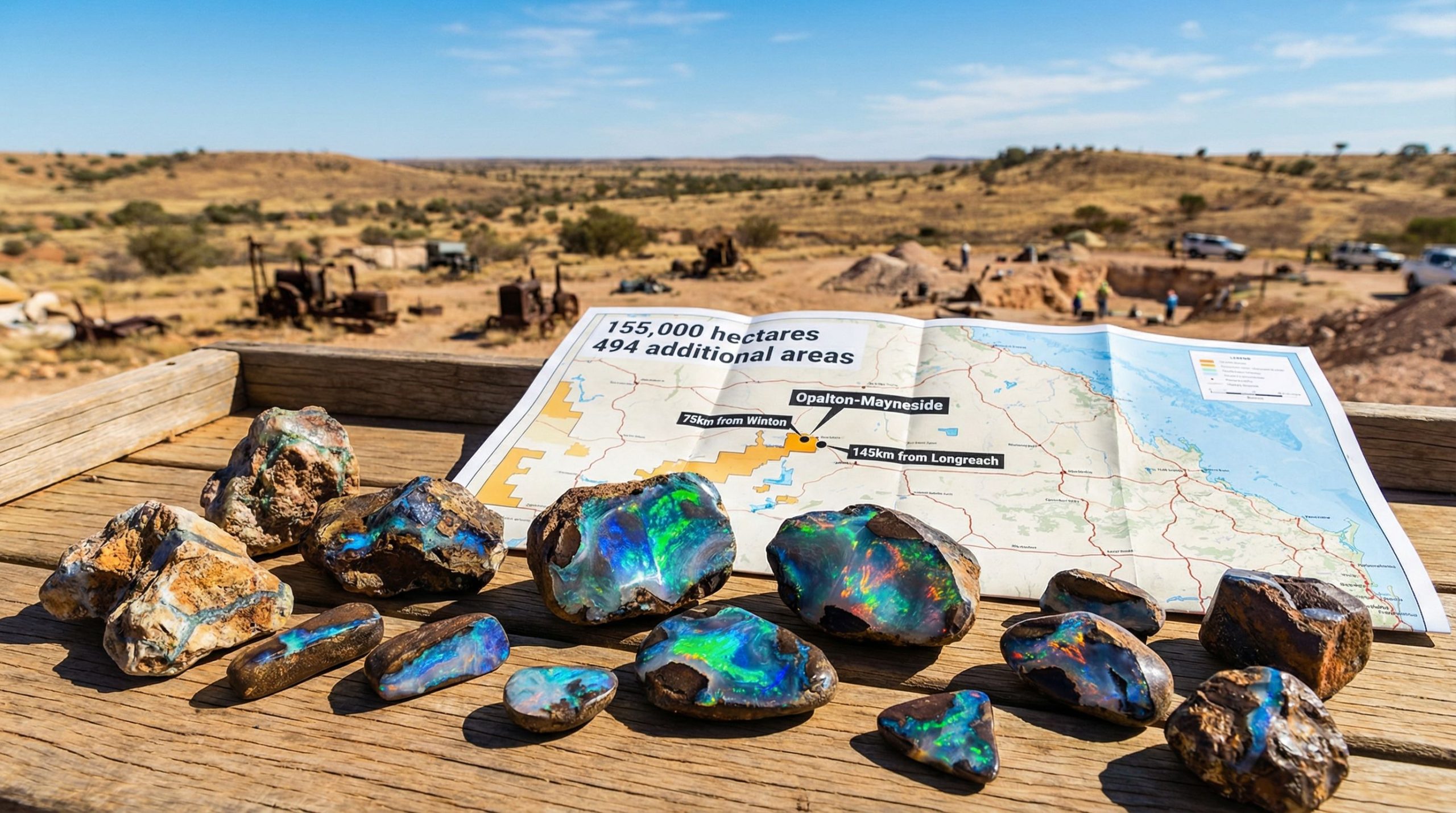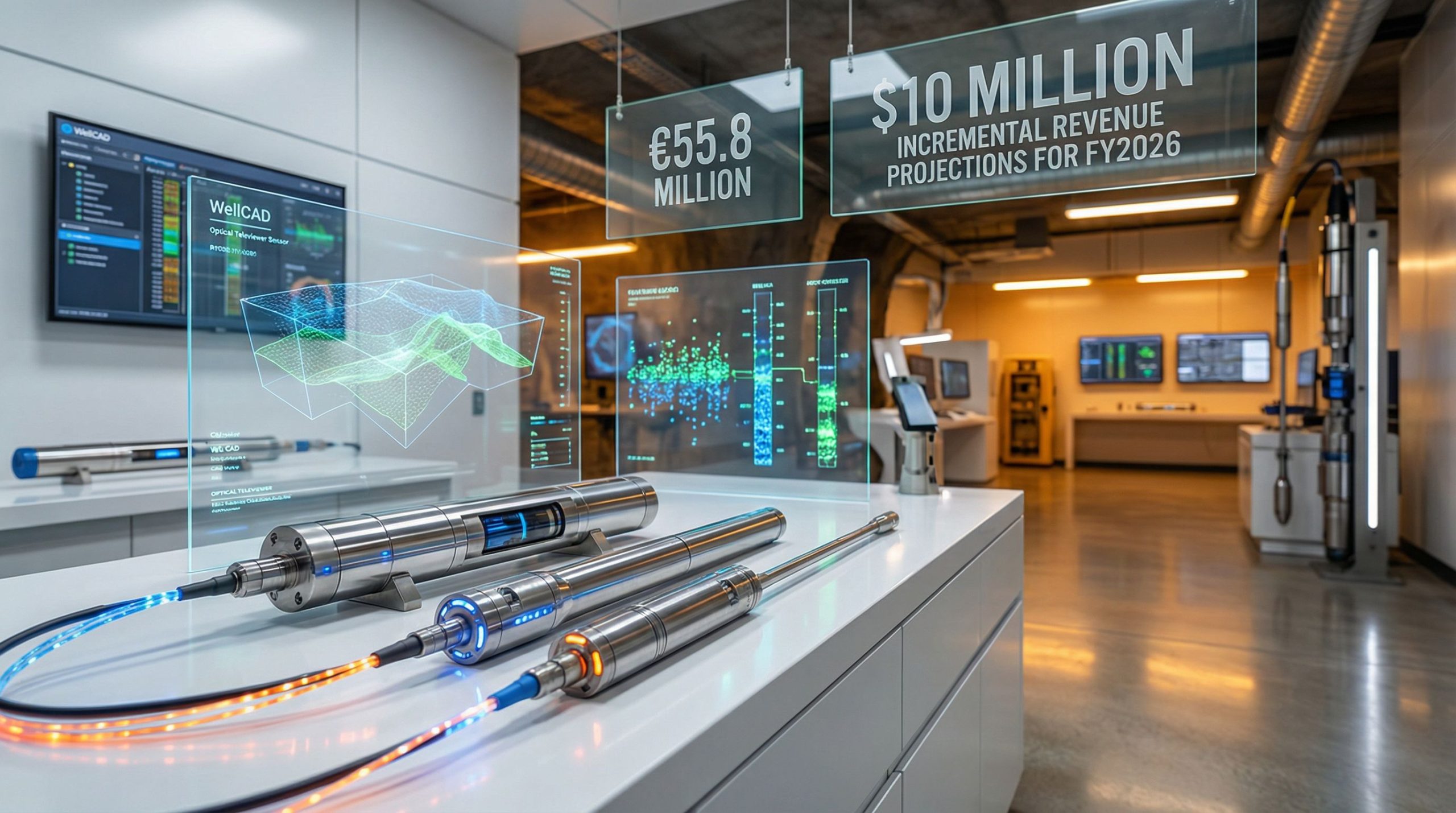How Are Trackless Machinery Constraints Affecting Zimplats' Production?
Zimplats, a leading platinum group metals (PGMs) miner, has experienced significant operational challenges due to limited availability of trackless mobile machinery (TMM). This critical equipment shortage has resulted in an 11% year-on-year decline and 4% quarter-on-quarter reduction in mined volumes, creating a substantial impact on the company's production capabilities and necessitating strategic adaptations to maintain operational viability.
The ripple effects of these TMM constraints have been felt throughout Zimplats' value chain, with milling operations and concentrate production significantly affected. The company's ability to transport ore efficiently from mining faces to processing facilities has been particularly compromised, creating bottlenecks that have proven difficult to overcome despite management interventions.
Understanding Trackless Mobile Machinery in Mining
Trackless mobile machinery constitutes the backbone of modern underground mining operations, particularly in platinum mines where efficient ore extraction and transportation are essential for meeting production targets. Unlike traditional rail-based systems, TMM provides flexibility in navigating complex underground environments.
Key TMM equipment in platinum mining includes:
- Load-haul-dump (LHD) machines – Versatile units that combine loading, hauling, and dumping functions in a single vehicle
- Underground mining trucks – Specialized vehicles designed for ore transportation in confined spaces
- Drill rigs – Mobile platforms supporting rock penetration equipment for blasting operations
- Utility vehicles – Support vehicles for maintenance, personnel transport, and auxiliary functions
- Personnel carriers – Specialized vehicles designed for safely transporting workers to underground operations
The operational flexibility offered by this equipment allows mining companies to adapt to varying geological conditions and optimize extraction methods. However, this dependency creates significant vulnerability when machinery availability is constrained, as demonstrated by Zimplats' recent experience with digital mining innovations.
What Production Impacts Has Zimplats Experienced?
Decreased Mining Volumes
The constraints in trackless machinery availability have translated into measurable production declines across Zimplats' operations. The company's quarterly report reveals significant regression in key performance metrics:
| Performance Indicator | Year-on-Year Change | Quarter-on-Quarter Change |
|---|---|---|
| Mined Volumes | -11% | -4% |
| Milled Volumes | -17% | -8% |
| 6E Concentrate Production | -20% | -15% |
These substantial decreases highlight the critical interdependence between functional equipment availability and production output in PGM mining. The disproportionate impact on milled volumes (-17%) compared to mined volumes (-11%) suggests compounding effects as production constraints cascade through the processing chain.
The most severe impact appears in 6E concentrate production, which experienced a 20% year-on-year decline to 135,172 ounces. This metric represents the culmination of all upstream constraints and demonstrates how equipment shortages can amplify through each production stage.
Mitigation Through Opencast Mining
Facing these significant production challenges, Zimplats implemented a strategic operational pivot in January by resuscitating opencast mining operations within the Ngezi mining lease area. This adaptive approach yielded important production contributions:
- Generated 76,000 tonnes of ore (representing 4.3% of total mined volumes) in the quarter
- Provided additional ore supply to partially offset underground production shortfalls
- Introduced lower-grade material into the processing mix, affecting overall head grade
- Demonstrated operational flexibility in responding to equipment constraints
This tactical response illustrates how mining companies can leverage alternative extraction methods when facing equipment limitations. However, the introduction of lower-grade opencast material created secondary challenges in processing efficiency and recovery rates.
How Has Ore Quality Been Affected?
Grade and Recovery Fluctuations
The machinery constraints and resulting operational adjustments have created measurable impacts on ore quality metrics:
- 6E PGM head grade improved by 1% year-on-year despite production challenges
- Head grade declined by 1% quarter-on-quarter due to inclusion of lower-grade opencast ore
- Concentrator recoveries remained largely stable year-on-year, demonstrating processing resilience
- Quarter-on-quarter concentrator recoveries decreased by 1%, tracking with head grade variations
These seemingly minor fluctuations in grade and recovery metrics have significant implications for overall metal production and unit economics. The introduction of lower-grade opencast material forced metallurgical adjustments at the concentrator level, as processing parameters must be optimized for the specific characteristics of the ore.
The relationship between head grade and recovery rates demonstrates the delicate balance mining companies must maintain between volume and quality. While Zimplats managed to improve year-on-year head grade despite operational challenges, the inclusion of lower-grade opencast material necessitated processing tradeoffs that affected overall recovery efficiency.
What Financial Implications Have Resulted?
Cost Structure Changes
The operational constraints and strategic adaptations have created notable impacts on Zimplats' cost structure:
- Total operating cash costs increased by 3% year-on-year despite reduced production volumes
- Higher power costs associated with operating the new 38 MW smelter contributed significantly to cost increases
- Additional expenses related to the resuscitated opencast mining operations created further cost pressure
- Timing differences on the replacement of major engineering components added to cost fluctuations
A particularly significant financial event involved the processing of previously accumulated concentrate stocks, which resulted in $6.4 million being transferred from inventory to operating costs. This accounting adjustment reflects how production constraints can create inventory management challenges that impact reported financial results.
Unit Cost Increases
The combination of increased operating costs and decreased production volumes has created substantial pressure on Zimplats' unit economics:
- 6E operating cash unit costs reached $1,026 per ounce
- This represents a substantial 25% year-on-year increase in unit costs
- Quarter-on-quarter unit costs rose by 10%, indicating continuing cost pressure
- Lower reported volumes significantly impacted these metrics by reducing the denominator in cost calculations
These remarkable unit cost increases highlight how equipment constraints can create financial pressure through both direct pathways (increased operating expenses) and indirect effects (reduced production denominators for unit calculations). The 25% year-on-year increase in unit costs substantially exceeds the 3% increase in total operating costs, demonstrating the leveraged impact of production declines on financial metrics.
How Is Zimplats Addressing Long-Term Development?
Despite facing immediate operational challenges with trackless machinery availability, Zimplats continues to maintain focus on several strategic development projects that will shape its long-term operational capacity and efficiency:
Mupani Mine Development
The Mupani Mine represents a cornerstone of Zimplats' future production capacity:
- Designed to replace the depleting Rukodzi and Ngwarati mines
- Development progressing according to scheduled milestones
- Projected full production capacity of 3.6 million tonnes annually
- Target completion scheduled for the first half of the 2029 financial year
- Current project expenditure stands at $342 million against a total budget of $386 million
This significant capital investment demonstrates Zimplats' commitment to maintaining operational continuity despite current equipment challenges. The mine's development timeline extends beyond immediate constraints, positioning the company for sustained production capacity over the coming decades.
Smelter Expansion and SO2 Abatement
The company continues to advance its significant smelter expansion and environmental control projects:
- Overall project investment has reached $452 million of a $544 million total budget
- Phase 1 (smelter expansion and initial SO2 abatement) is now technically complete
- Phase 1 expenditure stands at $384 million against a $398 million budget
- Phase 2 (advanced SO2 abatement) includes sophisticated wet gas cleaning and wet sulphuric acid plants
- Current Phase 2 expenditure has reached $68 million of a $146 million budget
These investments enhance both production capacity and environmental sustainability, addressing regulatory requirements while improving operational capabilities. The technical completion of Phase 1 marks a significant milestone in Zimplats' processing infrastructure development.
Renewable Energy Integration
Zimplats has successfully implemented significant renewable energy capacity:
- 35 MW solar plant commissioned in August 2024
- Reached design generation capacity in December 2024
- Completed within the approved budget of $37 million
- Supports sustainability goals while providing partial insulation from power cost fluctuations
This investment in renewable energy infrastructure demonstrates Zimplats' commitment to sustainability while also providing strategic advantages in energy cost management and supply reliability – particularly important considerations in the Zimbabwean operational context.
Base Metal Refinery Refurbishment
The company continues advancing its base metal refinery upgrade:
- Current expenditure has reached $33 million
- Total project budget established at $190 million
- Will enhance processing capabilities and value addition potential
- Supports broader beneficiation strategies in the region
This investment supports Zimplats' vertical integration strategy and enhances its ability to capture additional value from its mineral resources through advanced processing capabilities.
What Exploration Activities Is Zimplats Conducting?
Despite the operational challenges related to trackless machinery constraints, Zimplats maintains active exploration efforts to define future resource potential:
- Eight exploration drillholes completed in the most recent quarter
- Total of 2,178 meters drilled along the declines at Bimha and Mupani mines
- Exploration focused on guiding decline development to optimize access to ore bodies
- Additional investigation targeting geological structures within the scheduled five-year mining footprint
This ongoing exploration work demonstrates Zimplats' commitment to long-term resource development despite current operational limitations. The strategic focus on near-term mining areas (five-year footprint) indicates a pragmatic approach to resource definition that prioritizes information most relevant to immediate production planning.
How Is Metal Production Being Affected?
Processing Adjustments and Inventory Management
The trackless machinery constraints have created complex ripple effects throughout Zimplats' processing chain:
- Final metal production affected by optimization works on the new 38 MW furnace and converters
- 60,000 tonnes of concentrates processed in the quarter, clearing accumulated inventory backlog
- Partial offset from accumulation of approximately 12,100 6E ounces in furnace reverts and furnace matte
- 6E metal in final product reached 139,506 ounces (16% lower year-on-year but 8% higher quarter-on-quarter)
- Approximately 16,000 6E ounces of accumulated in-process inventory expected to be released in the fourth quarter
These processing adjustments highlight how mining companies can strategically manage inventory and processing schedules to partially mitigate upstream production challenges. The quarter-on-quarter improvement in final metal output (+8%) despite continued mining constraints demonstrates the potential for processing optimization to buffer production variability.
The expected release of 16,000 6E ounces from in-process inventory in the coming quarter represents a significant production buffer that will help stabilize reported results while the company continues addressing the underlying trackless machinery constraints.
What Are the Broader Implications for PGM Mining?
Equipment Dependency Risks
The Zimplats experience illustrates several important considerations for the broader PGM mining sector:
-
Operational Vulnerability: Heavy reliance on specialized equipment creates significant operational vulnerabilities when machinery availability is constrained through maintenance issues, supply chain disruptions, or component failures
-
Adaptive Mining Methods: Maintaining capabilities in alternative mining methods (such as opencast operations) can provide crucial production flexibility during equipment shortages, though potentially at the cost of grade optimization
-
Cost Structure Impacts: Equipment constraints can drive substantial unit cost increases through both direct pathways (increased maintenance expenses, alternative mining costs) and indirect effects (reduced production volumes affecting unit calculations)
-
Processing Optimization: Strategic processing adjustments and inventory management can help buffer upstream production challenges, though with potential impacts on reported financial results through inventory valuation changes
-
Long-term Investment Balance: Maintaining focus on development projects remains essential even when addressing immediate operational challenges to ensure future production capacity is not compromised
Strategic Considerations for Mining Operations
Mining companies facing similar equipment constraints might consider implementing several proactive strategies:
- Developing formal contingency plans for rapidly implementing alternative mining methods when equipment availability falls below critical thresholds
- Implementing more sophisticated preventive maintenance programs informed by predictive analytics to anticipate potential equipment failures
- Diversifying equipment suppliers and maintaining strategic parts inventories to reduce dependency risks associated with specific manufacturers
- Creating strategic inventory buffers at key points in the processing chain to maintain processing continuity despite upstream production fluctuations
- Investing in equipment monitoring technologies and digital twins in mining to anticipate potential failures before they impact production
These approaches can help mining operations build resilience against the type of equipment constraints currently affecting Zimplats, creating a more robust production profile even when facing similar challenges.
FAQ: Zimplats and Trackless Machinery Constraints
What is trackless mobile machinery (TMM) in mining?
Trackless mobile machinery refers to self-propelled vehicles used in underground mining operations that don't require fixed tracks or rails to operate. These include load-haul-dump machines, underground trucks, drill rigs, and utility vehicles that are essential for modern mining operations, particularly in complex ore bodies like those found in platinum mines.
How significant was the impact of TMM constraints on Zimplats' production?
The impact was substantial, with an 11% year-on-year decrease in mined volumes, a 17% reduction in milled volumes, and a 20% decline in 6E concentrate production compared to the same period last year. These figures demonstrate the critical role that functional trackless machinery plays in maintaining consistent production levels in PGM mining operations.
What strategies did Zimplats implement to mitigate the TMM constraints?
Zimplats resuscitated opencast mining within the Ngezi mining lease area, which contributed 76,000 tonnes (4.3% of total mined volumes) in the quarter. This adaptive approach helped partially offset the production shortfall from underground operations, though it introduced lower-grade ore to the processing mix, affecting overall head grade and recovery metrics.
How did the TMM constraints affect Zimplats' operating costs?
The constraints led to a 25% year-on-year increase in 6E operating cash unit costs, which reached $1,026 per ounce. Total operating cash costs increased by 3% year-on-year due to higher power costs associated with the new smelter, expenses related to opencast mining operations, and timing differences in equipment component replacements.
Is Zimplats still progressing with its development projects despite these challenges?
Yes, Zimplats continues to advance several strategic projects, including the Mupani mine development (currently at $342 million of a $386 million budget), smelter expansion and SO2 abatement initiatives ($452 million spent of $544 million budget), a 35 MW solar plant (now operational), and base metal refinery refurbishment ($33 million spent of $190 million budget). This demonstrates a commitment to long-term growth despite current operational challenges.
Further Resources on PGM Mining Operations
Readers interested in learning more about platinum mining operations and challenges can explore additional educational content from industry publications such as Mining Zimbabwe, which regularly covers developments in the platinum group metals sector and operational challenges faced by mining companies.
The technical interplay between mining methods, equipment availability, processing optimization, and financial outcomes demonstrated in Zimplats' experience provides valuable insights for understanding the complex operational realities of modern PGM mining, highlighting both vulnerabilities and adaptive strategies available to producers facing similar constraints. For those interested in investment implications, a comprehensive mining stock guide can help navigate the financial aspects of these operational challenges.
Furthermore, the mining sector continues to evolve with the mining 4.0 revolution bringing technological solutions that could potentially address some of the trackless machinery constraints faced by companies like Zimplats. Understanding the broader market dynamics insights can also provide context for how these operational challenges translate to stock performance.
Are You Investing in the Next Major Mineral Discovery?
Don't miss out on significant ASX mining opportunities that could generate substantial returns. Explore Discovery Alert's dedicated discoveries page to understand the potential of major mineral finds and begin your 30-day free trial today to receive instant notifications powered by the proprietary Discovery IQ model at https://discoveryalert.com.au/discoveries/.




